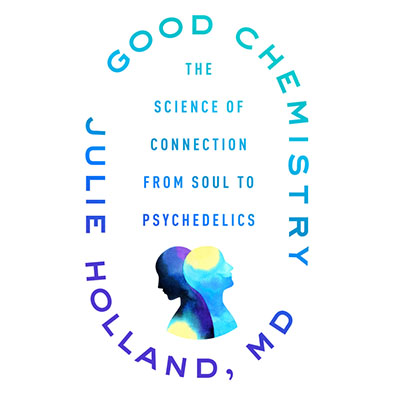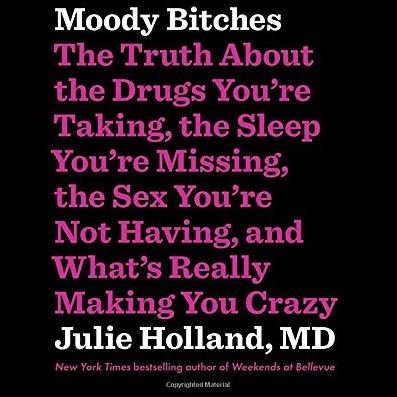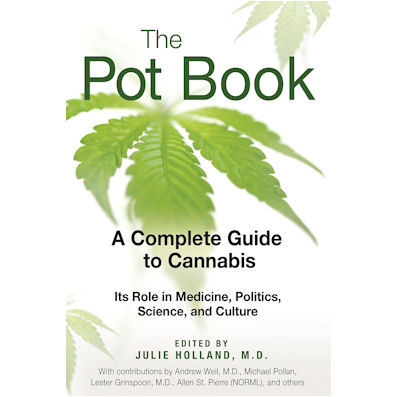Ecstasy Guide

Sample Chapters
Additional Chapters
Sample chapter: Prescription for Cultural Renaissance
By Douglas Rushkoff
Every culture and subculture get the drugs that they deserve. In fact, almost every major cultural movement in history can be traced back to the chemicals they did or didn't have.
While ancient nomadic tribes experienced regular psychedelic excursions by eating the mushrooms that grew on the dung of the cattle herds they followed, early agrarian cultures were denied the privilege (and spared the hazards) of such a drug-inspired social system. Historians tracing the shift in value systems towards property ownership, and in psychology towards the development and maintenance of ego, too often ignore the impact that these natural psychedelics must have had on these early cultures.
Similarly, the coffee beans imported from Morocco to Europe in the 14th and 15th century gave rise to the late night discussions and midnight-oil-burning artistic reverie that launched what we now think of as the Renaissance. Young coffee-drinkers, empowered by the stimulant beverage to stay awake after normal working hours, embarked on a reconsideration of the foundations of their reality. They developed everything from calculus to perspective painting as their apprehension of our world's dimensionality took a leap forward.
That's what a renaissance is, really: a rebirth of old ideas in a new context. We gain the ability to reframe many facets of our existence with a greater sense of dimensionality. Whether it's understanding that the globe itself is a sphere instead of a plane, or that paintings can have depth and vanishing points, the renaissance insight marks an increase in understanding of dimension. It is a moment when we go "meta."
Just such a renaissance moment has been underway in the popular culture of the West since the 1960's. Foreshadowed by breakthroughs in relativity and quantum physics, this leap in dimensionality finally hit public consciousness with the escape of the "CIA brainwashing drug" LSD into academic and subcultural circles.
The psychedelic revolution, though limited to an underground phenomenon, led to a rebirth of ancient ideas in a new, scientific context. Psychologists like Timothy Leary, eager to comprehend the nature of the LSD trance, turned to spiritual systems from the East like the Tibetan Book of the Dead. This chronicled the process by which the insights acquired on the transdimensional vision quest could be incorporated into one's daily existence through a "conscious rebirth" at trip's end.
Just as participants of the earlier renaissance had come to grips with the three-dimensional reality of the sphere on which they walked, psychedelic pioneers began to perceive of the planet as a living system, interconnected and interdependent. Biologist-philosophers like James Lovelock developed new theories to explain this phenomenon, such as the Gaia Hypothesis that credits the planet with the properties of a self-regulating form of life. Meanwhile, mathematicians emerged from their psychedelics experiences with a new appreciation for the dimensionality of the numbers with which they worked. Systems theory posited a new set of dynamic mathematical relationships between the members of natural systems and large populations. People began working with long-detested non-linear equations, discovering "fractional dimensionality," or fractals, which allowed for the mathematical comprehension of formerly unfathomable systems. By granting a cloud its fractional dimensionality, rather than reducing it to a simple sphere, mathematicians were finally able to reckon with its previously untenable surface area.
Just as the 16th Century brought with it a new technique for depicting our newfound perspective, the 1970's saw the emergence of holographic technologies, which went even further to add dimensionality to our representations. In addition to depicting depth, the holograph can represent the passage of time. As the viewer moves across the holographic image, the image itself can move -- a woman can blink her eyes, and a bird can flap its wings. More remarkably, the holographic plate itself stores information in a way that forces us to re-evaluate the nature of matter. If a holographic plate depicting a flying bird is smashed into thousands of pieces, each piece will contain an image of the entire bird, albeit blurry. When the image is left intact, the separate images are resolved into a single image with all the necessary information.
The implication, which is currently under scrutiny in fields as diverse as brain anatomy and cultural anthropology, is that each part of a system somehow contains a faint representation of the whole. When properly networked together, the total picture of reality is resolved.
The original renaissance was also inspired, in part, by a new communications technology: the printing press. Thanks to Gutenberg, the masses became literate. The Bible and other texts were no longer to be read only by the upper classes and religious elite. This led to an increasingly level playing field as far as the dissemination of information, and eventually provoked a religious reformation known as Protestantism.
By the 1980's, our current renaissance found its technological equivalent to the printing press: the personal computer. Now, individuals were empowered not merely with access to information, but with the ability to self-publish across global networks. This marked a clear dimensional upscaling of the relationship of the individual to society at large. Each human being with a computer linked to the Internet became a node in a dynamic system, capable of feedback and iteration. We are still only beginning to reckon with the social impact of this new human interactivity.
But our computer networks give us the best clue as to the nature of our latest increase in dimensional thinking, as well as the reason why MDMA, in particular, became the drug of choice among the newly networked. Much of early cyberculture was founded by people with psychedelic experience. It seemed that those who already had experience navigating the hallucinatory realm of the LSD trip were most comfortable learning the languages and confronting the as-yet uninvented worlds of cyberspace. As fledgling Silicon Alley firms became dependent on Grateful Deadheads and other psychedelics users as programmers, cyberculture became known as a "cyberdelic" movement. The values of 1960's psychedelia found new life as they trickled up from a subculture to what was soon to become America's leading industry.
As if in an effort to physically and experientially actualize the networked culture they were building in cyberspace, young, hi-tech San Franciscans developed their own version of the electronic music parties they heard about from friends who had traveled to Britain and Ibeza. In Europe, the huge parties called "raves" were already commonplace. Thousands of revelers would gather in abandoned warehouses or on remote fields to dance until dawn to the throbbing beat of "acid house" music recorded originally by Detroit-based African-Americans. When the first imported raves were held in the Bay Area, however, they took on a more self-consciously volutionary agenda. San Francisco raves were designed to be like the famous "Acid Tests" thrown by Ken Kesey and the Merry Pranksters. The music, lighting, and ambience were all fine-tuned to elicit and augment altered states of consciousness. The rhythm of the music was a precise 120 beats-per-minute, the frequency of the fetal heart rate, and the same beat used by South American shaman to bring their tribes into a trance state. Through dancing together, without prescribed movements or even partners, rave dancers sought to reach group consciousness on a level they had never experienced before. The object of a rave was to experience a reality that went beyond the self. Ravers aspired to an awareness of group organism. Inspired by the holograms and fractals on their computers, they sought to create a dynamic system in which each member could experience the essence of the whole.
The drug they chose to assist them in this quest was MDMA.
Most of them had already experienced LSD. But the LSD trip was a personal, introspective experience. Although most individuals report a sensation of "connectedness" with the universe at the peak of an LSD experience, this realization of the oneness of reality is a largely intellectual revelation, on the order of an intense spiritual insight. For the LSD trip is epic in structure, like the Homeric arc of heroic journey. A rising euphoria climaxes in an ego-shattering epiphany of self-realization. Ego is destroyed, at least temporarily, and the foundations of ego and self are revealed as artificial constructs of mind. But the trip itself is spent challenging and destroying these constructs. Eventually, the tripper takes the long journey back to waking state consciousness, clutching to the insights he has garnered as he is rebirthed back into his ego-defined existence.
MDMA, which gained notoriety as an empathogen through its use by psychotherapists prior to its reclassification as an illegal substance in the 1980's, offered a trip more appropriate to the purposes of the rave. Unlike LSD, Ecstasy -- which most ravers simply called "E" -- provided a more even plateau of duration than the highly arced LSD trip. Users took the drug and experienced its full effects in less time. Instead of rising to a crescendo and then releasing users into freefall, Ecstasy came on more subtly, gently coaxing its users into a mild and communicative euphoria. Instead of journeying inward, E users found themselves venturing outward. Ecstasy's flatter and correspondingly more predictable onset and duration made it a much more practical enhancement to an eight-hour party. Its amphetamine-like side effects helped its users to dance longer and with greater energy than they might otherwise have, guaranteeing that they would be out on the floor with their newfound friends during the group's peak moments. No one wanted to be left out.
For the climax of a group E experience is not individual but collective. Where LSD subjected its users to the harsh crucible of self-analysis, E immediately proved itself a carefree, social drug. Rather than burning through an individual's obstacles to self-awareness, it melted away a group's obstacles to intimacy. Although MDMA became notorious for fostering "inappropriate bonding" in a romantic setting, it was also just as celebrated for developing group cohesion at a larger gathering. Like alcohol, E served as a social lubricant, dissolving inhibitions and catalyzing an almost tribal sensibility. But instead of doing this by amplifying an individual's sense of power and invincibility, E's effect was to generate a sense of identification between people. It was as if a group of people taking E together was empowered collectively. The sense of individualism and personal gain one strove for in the workaday reality suddenly seemed a hollow illusion, promoted by economics, marketing, and one's own fear of exposure. Competition between individuals, and even the notion of individuated personhood seemed a farce. On MDMA, users came to regard such personal strivings and associated anguish as laughable distractions from the real business at hand: forging intimate relationships on a level previously unimaginable.
Nothing could have been more aligned with the rave's stated purpose. Though not mandatory, dosing with E was deemed extremely beneficial to a group of several thousand strangers hoping to shift itself into the headspace and heart-space of collective awareness. The rave gathering offered experiential evidence of the dimensional leap that had been calculated and depicted by holograms and fractals. It physicalized the sorts of social networking that had only been practiced on a virtual level through the Internet. Stripped of personal ambition and provoked to form emotional bonds, the revelers at a rave gathering were enabled to push their experiments in group dynamics beyond what their egos and inhibitions would have permitted otherwise. The E seemed to serve almost as a fuel. While some believed that the MDMA molecule had an almost conscious agenda of its own, more users tended to identify their new sensibility as coming directly from the heart, uncovered and activated at last by the drug's catalytic power.
It was a three-part process. First, Ecstasy stripped away the user's inhibitions to self-expression. On E, lies are inefficient, and the peculiarities or weaknesses they are meant to obscure no longer seem like offenses against nature. Young men who had long repressed their feminine sides felt an irrepressible urge to express their "anima," or female spirit. While a few experimented with homosexuality, it usually had less to do with defining sexual identity than eradicating over-determined and intimacy-restricting social roles. In this first stage of the Ecstasy trip, users experience themselves in full spectrum and without reservation. Old or young, gay or straight, muscular or nerd everyone is okay and beautiful just exactly as he or she is.
This first stage is also the time when psychological discomfort if it is to occur generally will. Though extremely minor compared with the harrowing, hallucinatory nightmare of a bad LSD trip, a difficult E experience usually results from the user's resistance to the emotional needs or personality traits he or she has been repressing all along. The reason why negative experiences are so rare is that MDMA does not parade people's hidden traits before them, demanding that they give voice to them or else. Rather, E makes people feel so open and accepting that these orphaned personality constructs finally rise to the surface where they can be manifest without shame. The user is so open-minded and emotionally giving that he or she welcomes the formerly rejected sentiments with open arms. Instead of feeling overwhelmed, the user generally feels consolidated and whole for the first time.
Once this process of self-acceptance is completed, the user still feels a burning need to accept more. This is when the second stage begins in earnest, and one seeks to recognize and embrace the emotional needs and personality traits of others. With the same openness and judgment-free enthusiasm with which they embraced themselves, the users strive to accept the hearts, minds, and bodies of those around them. They understand that their friends are also experiencing and expressing new parts of themselves, and seeing the world through the same non-prejudicial eyes. The overwhelming need to empathize with one another outweighs every other consideration. This is why almost no one on Ecstasy looks to score sexual conquests or increase his or her social status. People are too busy accepting and embracing each other to care about themselves.
This is when the third stage, the action of E most important to the group as a whole, finally takes effect. The majority of the crowd soon realizes that speech and one-to-one contact is no longer a sufficient means of reaching out and accepting the thousands of other people present. That's why they turn to the dance. As part of the collective, ten-thousand-armed, dancing mass, everyone gains the ability to accept and embrace the totality of the group simultaneously. Everyone has liberated personally, accepted one another individually, and must now accept the totality of the group itself into their hearts. In a sense, they go "meta." Like the quantum physicist who realizes he cannot make an observation without finding himself under the magnifying glass, the raver realizes he is a part of the very thing he is trying to accept.
This is the "magic moment" of the rave that so many people talk about for months or even years afterwards. Unlike a rock concert, which unites its audience in mutual adoration for the sexy singers on stage, the rave unites its audience in mutual adoration for one another. The DJ providing the rhythm is more of an anonymous shaman than a performer, mixing records from a remote corner of the room. The stage is the dance floor, and the stars are the ravers themselves. The group celebrates itself.
The peak of the E-xperience is when the drug and dance ritual brings the revelers into a state of collective consciousness. Descriptions of these extended moments of group awareness often fall into cliche, but they are profound, life-changing events for those who have experienced them. The dancers achieve what can only be called "group organism." That is, the individuals form a dynamic system like a coral reef, where each living individual experiences itself more as member of the collective entity than as an individuated cell. But in lower-order hive minds, the individual members, be they bees or plankton, have little or no awareness of their own participation in the collective. Their service is instinctual, the collective to which they belong has no purpose other than mutual survival. The collective formed purposefully by E-charged ravers is the result of a ritual self-consciously performed for no purpose other than the sensibility of group mind itself. The mass spectacle results in a fleeting but undeniable rush of collective awareness. Dancers move about freely on the floor, making eye contact that feels as though one were looking in the mirror: a single being with thousands of pairs of eyes, using people who formerly thought of themselves as individuals to examine itself.
The collective awareness achieved through mass MDMA use perfectly matched the social agenda of the subculture it came to serve. In their quest to find a drug capable of forging new social bonds, the rave underground happened upon a chemical that exceeded their original expectations. Ecstasy broke social inhibitions while engendering an empathic imperative that fostered new levels of emotional bonding. But the intensity of these bonds, augmented by the self-consciously inclusive and egalitarian environment that the users had engineered for themselves, led to an entirely new and unexpected way of understanding the relationship of individuals to the larger groups they form.
Like a hologram, the human project itself is understood as a collective enterprise. Each individual contains the entire process albeit a fuzzy, unresolved picture of that process within him or herself. The only way to resolve the picture is to bring those individuals together into a single, coordinated, and multi-dimensional being. For those keen on enacting a renaissance of this magnitude and hoping to do so before human beings had the ability to accept themselves, much less one another -- MDMA served as a crucial social medicine.
Ironically, perhaps, just as the hi-tech Internet tended to encourage what media theorist Marshall McLuhan predicted would be "tribal" affiliations and a sense of electronic Global Village, the laboratory-born MDMA molecule spawned a similar network of tribal communities. Like "primitive" tribal people who, after ingesting various combinations of rainforest psychotropics, would dance in group trance around the shaman's fire, young, techno-savvy ravers find their newfound tribal imperative actualized on the dance floor, and catalyzed by a chemical.
Though ingested by individuals, this powerful molecule's greatest action might be on the group.





